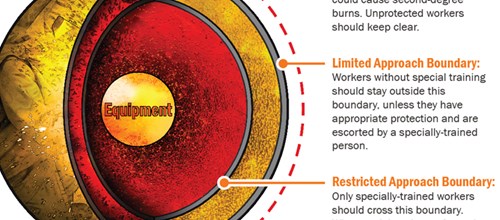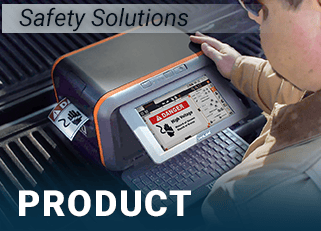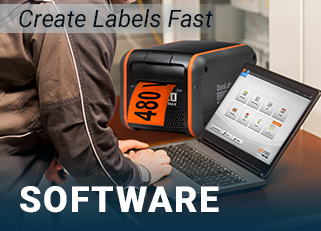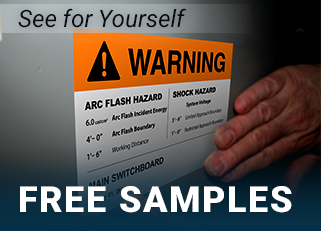Arc Flash Safety | Arc Flash Training Requirements
03
February,
2023
7 MINUTE READ

In the modern workplace, electricity is a driving force. Motors, ovens, presses, and mills can all be powered by electricity, and many industrial facilities make use of high voltages and currents to achieve their business goals. But accidents and equipment failures in these high-powered electrical systems can be deadly and destructive. Electric shock, burns, and arc flash are serious issues that need to be addressed.
Many of these incidents are unpredictable, so it can be difficult to keep workers safe. What's the best approach for resolving these problems?
Electrical Safety Hazards
Before you can resolve a problem, you need to know what the problem is. Generally, electrical hazards can be divided into high-voltage and low-voltage types.
High Power, High Danger
Exposure to strong electrical current can kill an affected person; strictly speaking, that's when an electric shock becomes "electrocution." Usually, death is the result of neurological damage or muscular interference, such as heart attacks. Strong current flowing through a body will generate enough heat to cook living tissue, so even electrical injuries that don't kill immediately can still cause severe burns that lead to death.
Another threat is the risk of arc flash. Arc flashes are essentially electrical explosions; they begin with a small spark that becomes a runaway arc, drawing more and more power until it destroys the conductors around it or the power is cut off. The result is a burst of intense light and extreme heat, taking a fraction of a second to reach thousands of degrees. Even if workers have no contact with equipment or conductors, they can be killed or maimed by the blast from an arc flash.
Even Low Voltages can be Dangerous
It's easy to focus on high voltages when it comes to the hazards of electric shock and arc flash. Those hazards don't disappear at low voltages, though. A 2008 medical study of non-lethal, low-voltage injuries found that even these "safe" situations can be very serious.
After two months of recovery time, only one-third of the patients in the study had been able to successfully return to work. Even then, long-term effects included numbness, paresthesia ("pins and needles"), and chronic pain. Ongoing neurological effects included problems with memory, attention, and behavior, even including violent tendencies among victims who had no prior history of behavioral trouble.
(Source: Theman K, Singerman J, Gomez M, Fish JS (2008). Return to Work After Low-Voltage Electrical Injury. Journal of Burn Care Research 6:959-64.)
What's Causing These Incidents?
To understand what was happening, the National Institute of Occupational Safety and Health (NIOSH) ran a long-term, detailed study of electrocution events. For more than a third of the incidents that were studied, there was no safety program or written safe work procedures guiding the activity. In fact, 39 of the victims had no safety training at all.
The study found that five critical factors seemed to cause or influence the incidents, with at least one of the following elements being the case for every single electrocution:
- Recognized safe work procedures were not implemented, or were not followed
- Appropriate personal protective equipment (PPE) was not provided, or was not worn
- Lockout/Tagout (LO/TO) procedures were not implemented, or were not followed
- Existing OSHA, NEC, or NESC requirements were not followed
- Electrical safety training was not adequate
(Source: National Institute of Occupational Safety and Health, 1998. Worker Deaths by Electrocution: A Summary of Surveillance Findings and Investigative Case Reports. DHHS Publication 98-131.)
That last point is the core issue. If workers haven't been trained adequately, they won't know to follow recognized safe work practices, wear the appropriate arc flash PPE, follow LO/TO procedures, or follow the requirements of regulations and industry standards. Training is the key.
Electrical Safety and Arc Flash Training is Required
This need for training isn't a surprise. In fact, requirements for adequate training have appeared in industry standards and OSHA regulations for some time.
The OSHA regulations in 29 CFR 1910.332 require electrical safety training for any employees who "may reasonably be expected to face? risk of injury due to electric shock or other electrical hazards." OSHA has compiled a list of job titles that typically include this kind of risk:
- Blue collar supervisors
- Electrical and electronic engineers
- Electrical and electronic equipment assemblers
- Electrical and electronic technicians
- Electricians
- Industrial machine operators
- Material handling equipment operators
- Mechanics and repairers
- Painters
- Riggers and roustabouts
- Stationary engineers
- Welders
The list is only of those who often need this kind of training; the actual requirement depends on the duties and circumstances in place. This basic safety training must cover the safety-related electrical work practices that are mandated by other OSHA rules, as well as any additional safety practices that may be needed to keep workers safe.
Who Needs Electrical and Arc Flash Safety Training?
OSHA considers any workers who will work on or near exposed energized parts to be "qualified workers," and those individuals need specialized training to help prevent electric shock. Other workers are considered "unqualified workers," and primarily need to be trained to recognize hazardous situations and keep away from them. Qualified workers must to be trained to deal with those situations safely, as part of their duties. Examples of these different types of training can be found in 29 CFR 1910.333(c)(3)(i) and (ii).
This distinction between qualified and unqualified workers represents broad categories, rather than an "A or B" choice between two defined options. Under the OSHA rules, the degree of training provided for a worker must be appropriate for that worker's level of risk. In fact, OSHA provided a letter of interpretation to clarify that even non-electrical workers may need electrical safety training, if they will be exposed to an electrical hazard.
As a result, employers need to assess the risk that each worker may be exposed to, and will be held responsible for providing the appropriate training. How can employers know what OSHA will consider "appropriate"?
NFPA 70E Arc Flash Training Requirements
The National Fire Protection Association (NFPA) makes recommendations on safe electrical work practices, and writes those recommendations into the well-respected NFPA 70E standard. Because NFPA 70E is compiled and used by experts in the field, OSHA frequently refers to it as an indicator of accepted practices in the field of workplace electrical safety. As a result, following NFPA 70E is an excellent approach for satisfying OSHA's electrical safety requirements.
NFPA 70E describes its general training requirements in Article 110.2. The requirements there are divided into two broad categories:
- Emergency Response Training. This includes basic shock response training as a requirement for all workers exposed to shock hazards. More in-depth training is required for workers who are designated as responders for medical emergencies. This training category requires refresher training at least once per year.
- Employee Training. This category covers OSHA-style worker training, similarly separated into sections for qualified and unqualified persons. The NFPA offers more detailed training requirements for qualified workers. Training in this category must be refreshed at least once every three years.

The NFPA Gets More Specific
Within the Employee Training category, the NFPA's distinctions between qualified and unqualified workers is much like OSHA's definitions for those groups. However, the NFPA standard's definitions in Article 100 include a more specific requirement for a worker to be considered qualified. A qualified person must have demonstrated skills and knowledge relevant to their work, and must have received specific safety training to identify and avoid the hazards that may be present. This means that NFPA 70E requires specific safety training as a prerequisite for being allowed to work on or near exposed energized parts.
Additionally, with the variety of electrical equipment and maintenance tasks that may be called for, the NFPA points out that a worker may be qualified for one task, but unqualified for another. To account for this, all training and assignments are treated in the standard as being specific to a given task. In fact, where a task is rare or unusual (something performed less often than once per year), the affected employees need to have retraining for that specific task each time the work is to be done.
Workers are not responsible for acquiring the appropriate training on their own; instead, employers are responsible for providing all of the training discussed in NFPA 70E. Employees are responsible for following the practices they've been trained on.
Electrically Safe Conditions
The most basic element of electrical safety training is what the NFPA calls "Establishing an Electrically Safe Work Condition." In a survey of arc flash injury victims, 94% of those interviewed believed that the incident could have been prevented, and the most frequently-mentioned method of prevention was simply to "turn the power off."
(Source: Kowalski-Trakofler K, Barrett E, 2007. "Reducing Non-Contact Electrical Arc Injuries: An Investigation of Behavioral and Organizational Issues," Journal of Safety Research, 38(5):597-608.)
Essentially, that's what the NFPA is promoting: turning off the power. There are six steps to establishing an electrically safe condition, described in Article 120 of NFPA 70E:
- Identify all possible sources of power to the equipment.
- Use appropriate steps to shut down the power, and then systematically disconnect each power source from the equipment.
- Where possible, verify (visually) that all disconnections are complete.
- Lock or tag out the power sources to prevent accidental re-energizing.
- Use an adequate test instrument to confirm that each part of the equipment has been effectively de-energized, and then verify that the test instrument is working normally.
- Where voltage may be induced, or where the de-energized parts could contact other energized parts, apply a ground connecting device rated for the available fault current.
If this process seems familiar (especially step 4, with its locks and tags), it's because this is an electricity-specific approach to a broader industry practice: Lockout / Tagout, or LO/TO.
This infographic identifies trends in electrical injuries, and describes the most common causes of these accidents.
Live Work Concerns
Where equipment can't be safely or effectively powered down before work is done, there is a substantial risk of electric shock and arc flash. In these cases, workers still need to be protected!
Many facilities are far too large and complex for a worker to remember all of the details about each piece of equipment. Instead, workers should be trained to recognize and understand equipment-specific labels, such as customized arc flash labels, that provide the necessary safety instructions and warnings.
These labels can include information about the Personal Protective Equipment (PPE) needed for live work, and they can also include safety boundaries that serve as simple and effective "stay-back" distances. But a label alone will not provide safety; workers need to know what these labels mean and how to use the information they carry. It all comes back to worker training.
Training is not a sunk cost of lost time or money; it's an investment. Investments are up-front expenses that are expected to bring an identifiable return. Good investments pay for themselves and more, generating profit. Effective training pays for itself, in terms of productivity, and it can save lives as well.
Electrical safety training, including arc flash training and shock hazard training, is not an option; it's required by law, and recommended by industry standards. But it's also the foundation of electrical safety, which protects your workers and your business. It's an investment that will pay off.
RELATED RESOURCES

Arc Flash PPE
Personal Protective Equipment (PPE) is the last line of defense against injuries. When it comes to arc flash, ...
Read
Halt Arc Flash Incidents - Improve Communication Using a Label Printer
Arc flashes are a dangerous electrical phenomenon that can occur in intense voltage areas and are more common ...
Read
Arc Flash in Mining
Very little can happen in mining without electricity. From drilling equipment and powered shovels to fixed ...
Read.png)


